African Hair Braiding Styles Photos: A Guide to Stunning Looks
African hair braiding is an art form that has been practiced for centuries. It’s not only a way to style hair but also a cultural expression of identity, beauty, and tradition. With a wide range of styles to choose from, there’s something for everyone, no matter their hair type, length, or occasion.
This article will take you on a journey through the captivating world of African hair braiding styles. We’ll explore the history, inspiration, and different types of braids, while showcasing stunning photos of each style.
The History of African Hair Braiding
Hair braiding in Africa dates back to ancient times, with evidence found in ancient Egyptian art depicting intricate braids. It served various purposes, including:
- Practicality: Braiding helped to protect hair from harsh weather conditions and kept it neat and tidy.
- Symbolic expression: Braids often represented status, social standing, and tribal affiliations.
- Aesthetics: Braiding was a way to express beauty and individuality.
Why are African Braids so Popular?
African braids have gained immense popularity worldwide due to their:
- Versatility: They can be styled in countless ways, from simple to elaborate, with intricate patterns and embellishments.
- Low maintenance: They last for weeks, minimizing the need for daily styling.
- Protective: They help to protect natural hair from breakage, heat damage, and environmental factors.
- Style statement: Braids are a bold and beautiful way to make a statement, expressing personal style and creativity.
Types of African Hair Braiding Styles
Let’s explore some of the most popular African hair braiding styles:
1. Cornrows:
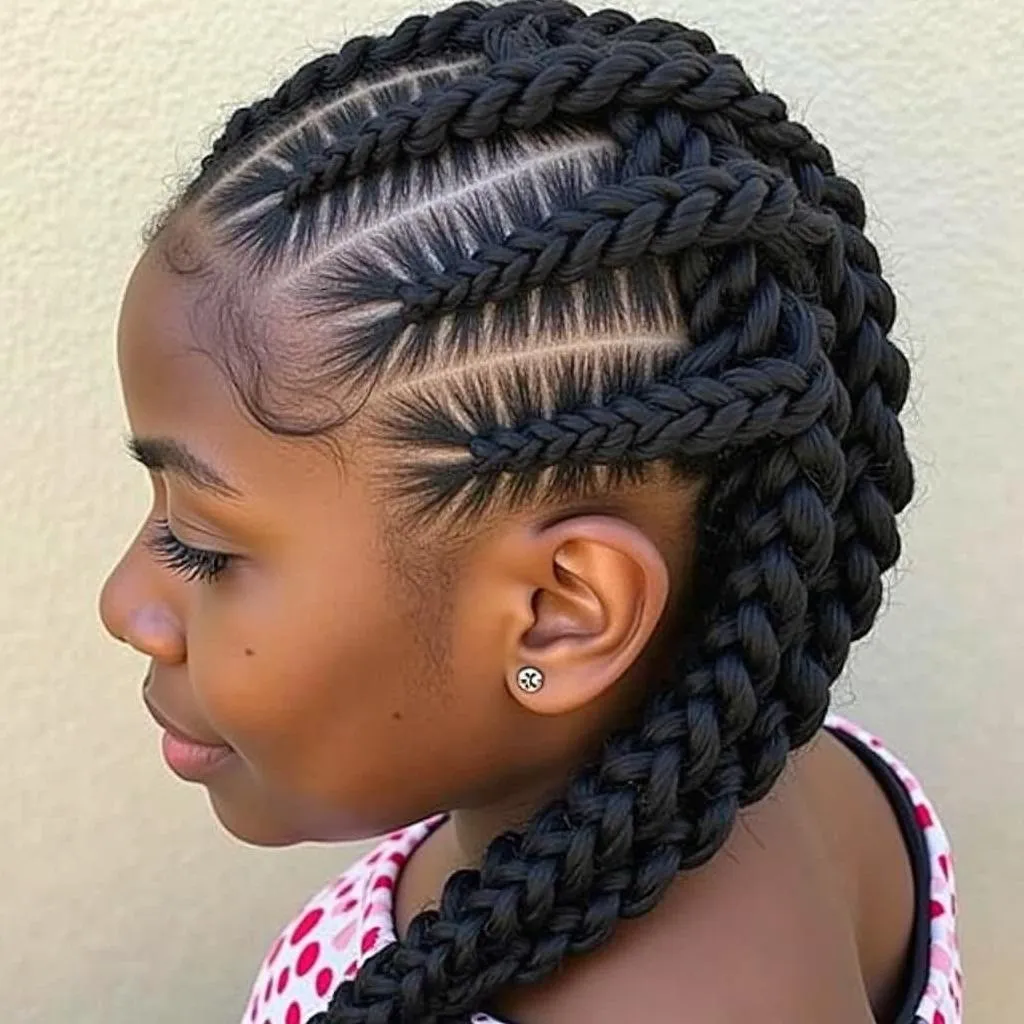 Cornrows Hairstyle
Cornrows Hairstyle
Cornrows are a classic and timeless style, loved for their sleek and elegant look. They’re perfect for both casual and formal occasions.
2. Box Braids:
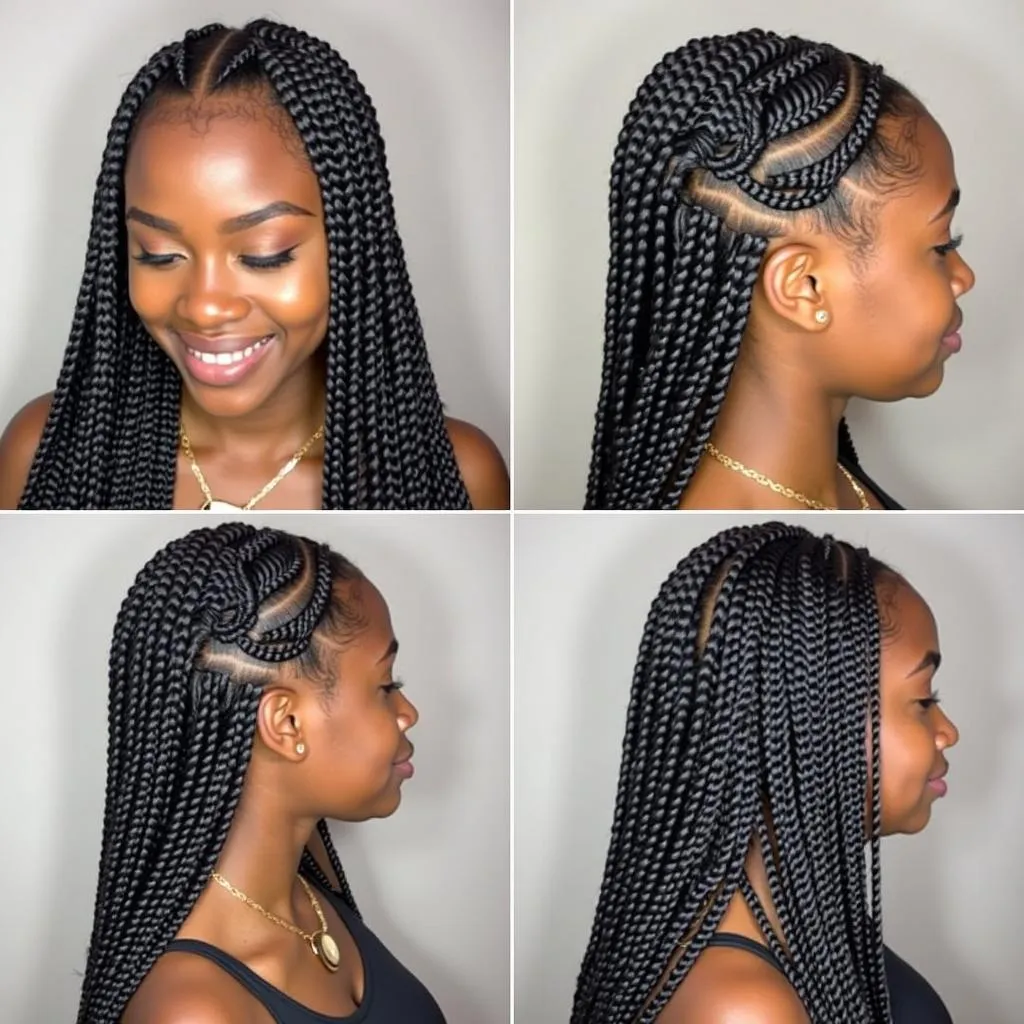 Box Braids Hairstyle
Box Braids Hairstyle
Box braids are trendy and versatile, allowing for creativity with different colors, lengths, and embellishments. They’re a popular choice for expressing personal style.
3. Fulani Braids:
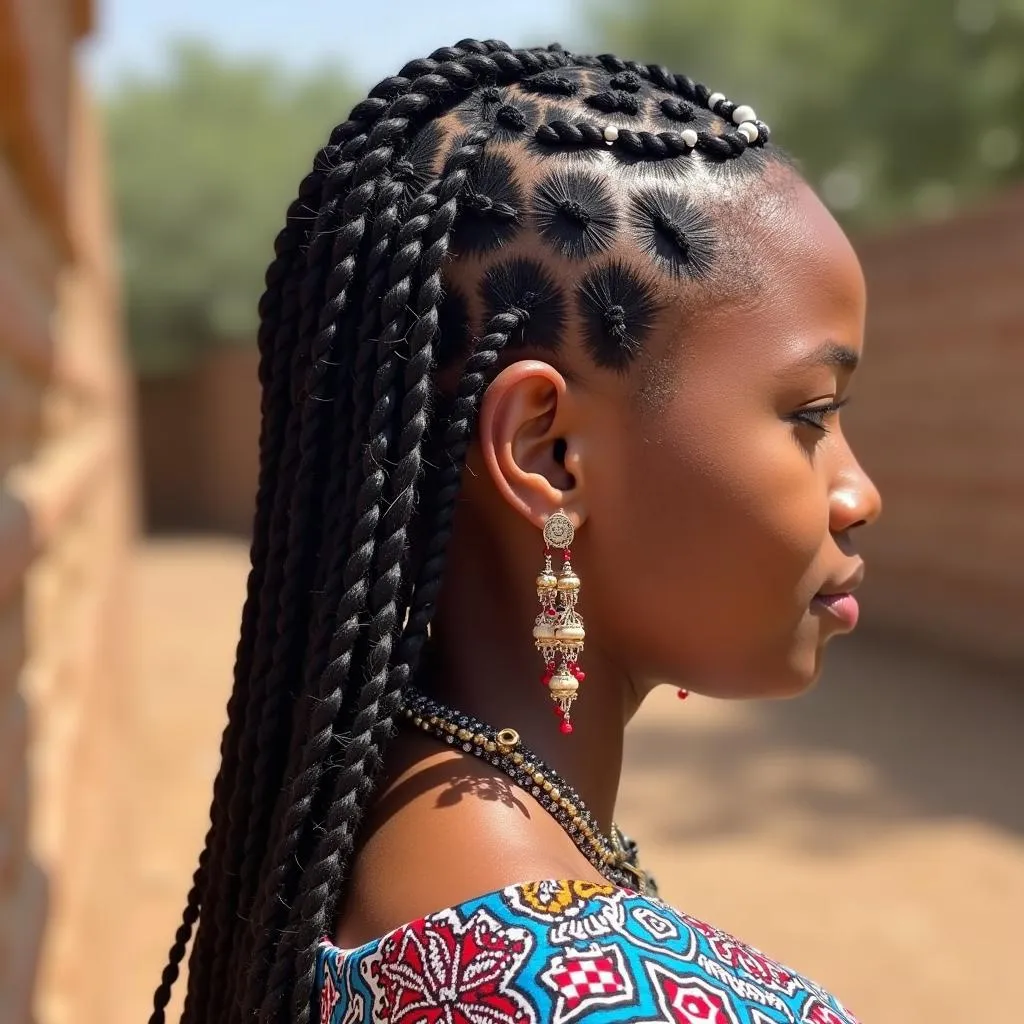 Fulani Braids Hairstyle
Fulani Braids Hairstyle
Fulani braids are beautiful and unique, symbolizing heritage and tradition. They’re a great way to showcase cultural pride.
4. Goddess Braids:
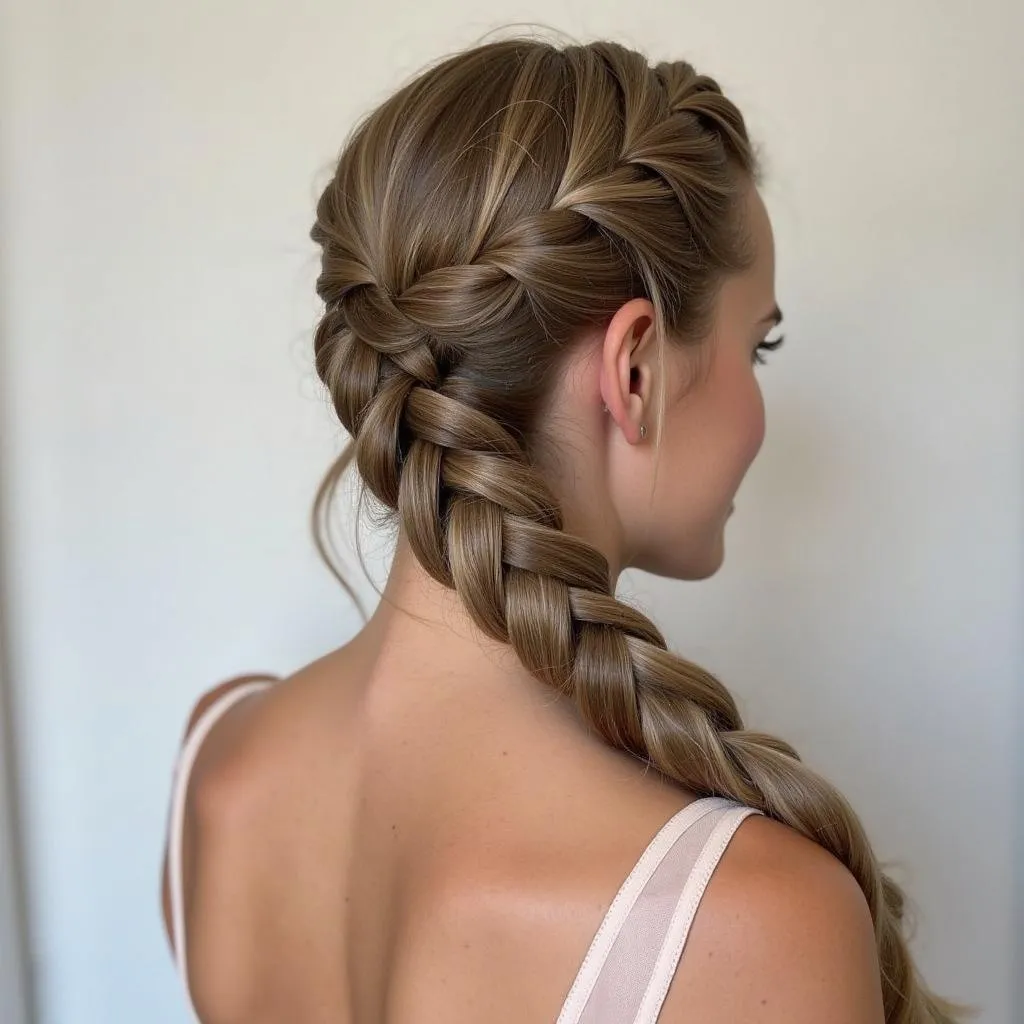 Goddess Braids Hairstyle
Goddess Braids Hairstyle
Goddess braids exude a regal and feminine vibe. They’re ideal for special occasions and events, adding a touch of glamour and sophistication.
5. Tribal Braids:
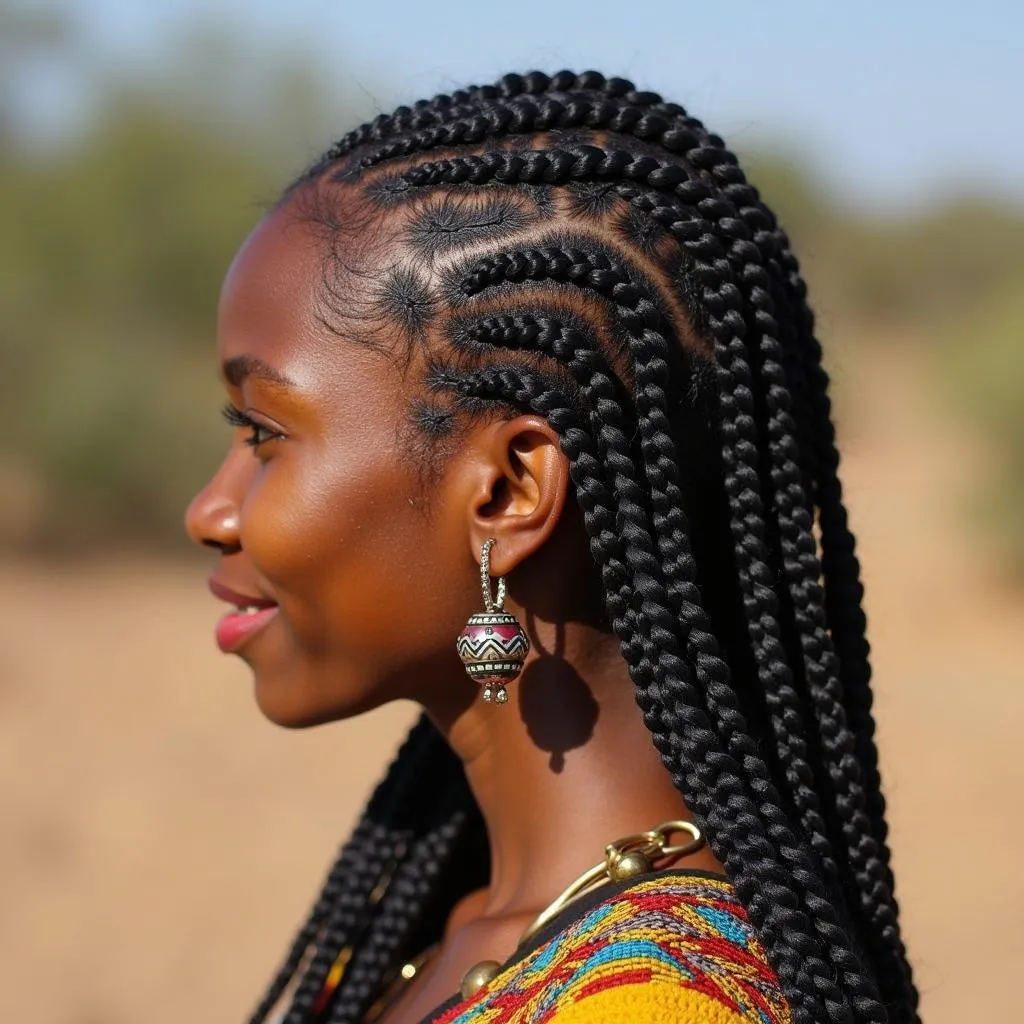 Tribal Braids Hairstyle
Tribal Braids Hairstyle
Tribal braids are a powerful way to celebrate African culture and heritage. They’re unique, expressive, and visually captivating.
Tips for Choosing the Right Style
“The best way to choose a braiding style is to consider your personal preferences, hair type, and lifestyle,” shares Aisha Njeri, a renowned African hair braider from Nairobi, Kenya. “Think about the occasion, how much time you’re willing to spend on maintenance, and what kind of look you’re going for.”
Here are some additional tips:
- Consult a professional: If you’re unsure about what style to choose, a professional braider can assess your hair type and recommend the best options.
- Consider your hair length: Some styles require longer hair, while others can be done with shorter hair.
- Think about your lifestyle: Choose a style that suits your daily activities and how much time you have for upkeep.
- Don’t be afraid to experiment: Try different styles until you find the one that makes you feel confident and beautiful.
Maintaining Your Braids
To keep your braids looking their best, follow these tips:
- Wash and condition: Wash your braids with a moisturizing shampoo and conditioner specifically designed for braided hair.
- Avoid excessive heat: Heat styling tools can damage your hair, so it’s best to air dry your braids or use a low heat setting if necessary.
- Keep them moisturized: Braids can dry out easily, so it’s important to keep them hydrated with a leave-in conditioner or hair oil.
- Schedule regular appointments: Get your braids retouched or removed by a professional braider when needed.
African Hair Braiding: A Celebration of Beauty and Culture
African hair braiding is much more than just a hairstyle. It’s a rich tradition, an art form, and a cultural expression that embraces diversity and celebrates individuality. By exploring the diverse styles and embracing the beauty of African hair, you can unlock a world of creativity and self-expression.
FAQ
1. How long does it take to get African braids done?
The time it takes to get African braids done varies depending on the style, the length of your hair, and the skill of the braider. It can range from a few hours to a full day.
2. How long do African braids last?
African braids can last for several weeks or even months, depending on the style, your hair growth rate, and how well you maintain them.
3. Can I dye my braids?
Yes, you can dye your braids. You can use a temporary hair dye or a permanent dye, depending on your preference.
4. Are African braids expensive?
The cost of African braids varies depending on the braider’s experience, the length of your hair, and the complexity of the style. It’s always best to get quotes from several braiders to compare prices.
5. Where can I find a good braider?
You can find a good braider by asking friends and family for recommendations, searching online reviews, or contacting local salons specializing in African hair braiding.
6. How often should I wash my braids?
You should wash your braids every 1-2 weeks to keep them clean and prevent buildup.
7. Can I sleep with my braids?
Yes, you can sleep with your braids. However, it’s best to use a satin scarf or pillowcase to prevent friction and minimize tangling.
If you have any further questions or need assistance with African hair braiding, please contact us at +255768904061, Email: [email protected] or visit us at Mbarali DC Mawindi, Kangaga, Tanzania. We have a 24/7 customer support team ready to assist you.


